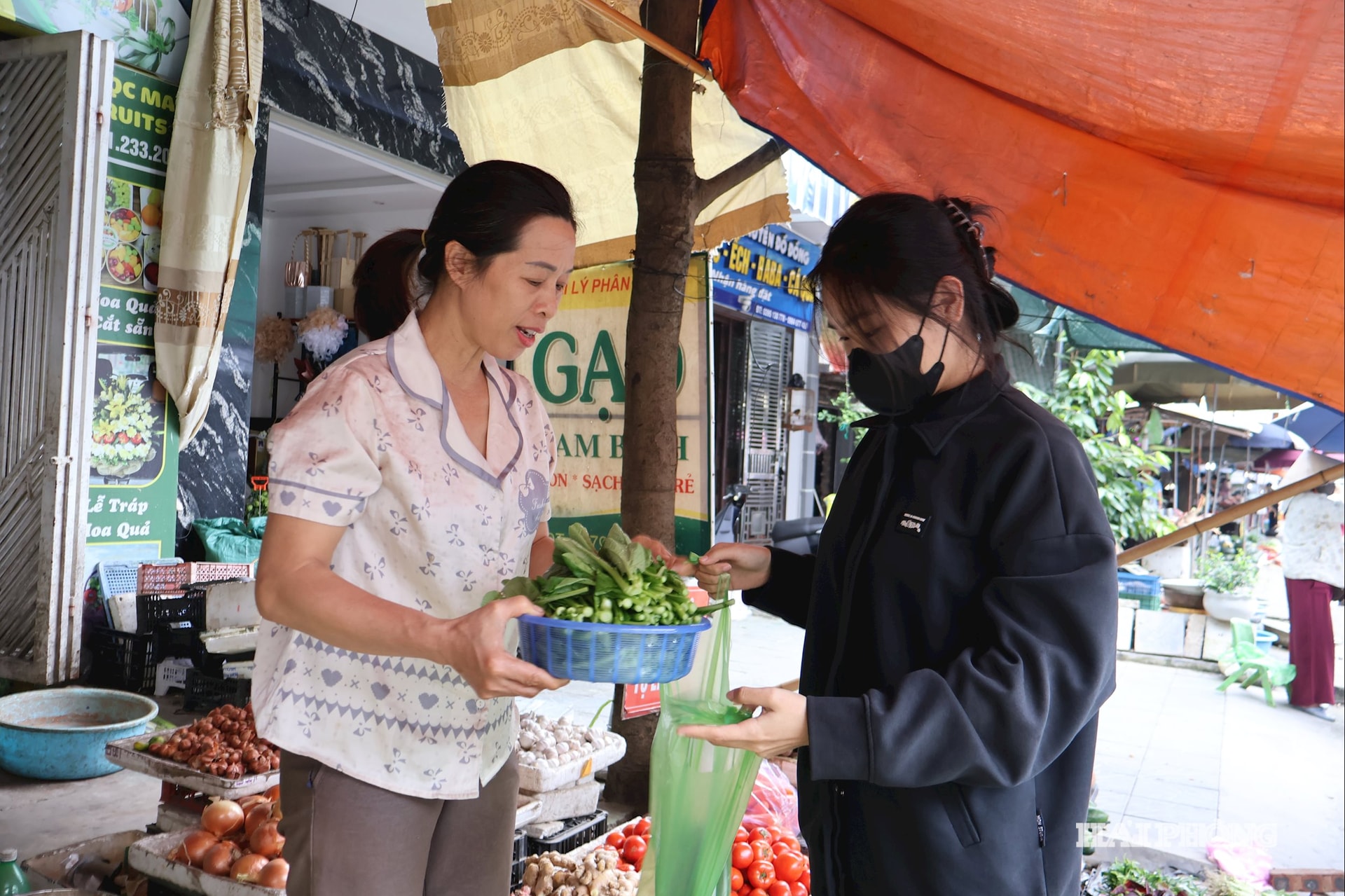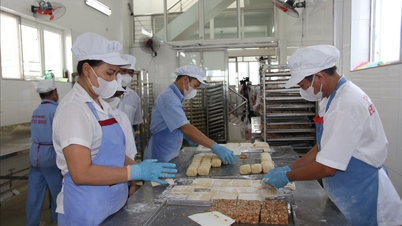.jpg)
Prices increased simultaneously
At An Da market (east of Hai Phong), most vegetables are priced higher than before. Mustard greens, water spinach and Malabar spinach are sold at 15,000 - 18,000 VND/bunch, an increase of 5,000 - 7,000 VND/bunch compared to a week ago.
At Dam Trieu market, vegetable prices have also increased. Cabbage has increased to 18,000 VND/kg, tomatoes from 25,000 - 28,000 VND/kg, and cauliflower ranges from 40,000 - 45,000 VND/kg. These prices have increased by an average of 5,000 - 7,000 VND/kg.
A similar situation was also recorded at Dong Ngo Quyen market in Le Thanh Nghi ward. On the morning of November 1, the price of water spinach and mustard greens was 18,000 VND/bunch, Malabar spinach 20,000 VND/bunch, and jute 15,000 VND/bunch. Other tubers and fruits also increased: green squash from 20,000 - 25,000 VND/kg (an increase of 5,000 - 8,000 VND/kg), tomatoes from 25,000 - 28,000 VND/kg (an increase of 3,000 - 8,000 VND/kg).
Ms. Nguyen Thi Toan, a trader at Dong Ngo Quyen market, said: “The price of green vegetables has been “escalating” for over a week now. Not only leafy vegetables, many types of spices such as green onions, dill, coriander... have also increased in price, fluctuating from 70,000 - 80,000 VND/kg, 20,000 - 30,000 VND/kg higher. The reason is that spices have a short growing period and are easily crushed when exposed to heavy rain, causing a decrease in quality.”
.jpg)
The high price of vegetables has forced many families in Hai Phong city to change their buying habits and food choices for their daily meals. Ms. Nguyen Thi Van in Ngo Quyen ward shared: “The price of vegetables is quite high compared to before the recent storm. The most expensive are leafy vegetables, tomatoes and herbs. To spend more reasonably, I switched to buying vegetables and fruits with "softer" prices such as eggplant, potatoes and carrots.”
What is the cause?
According to a representative of Hoang Nam Phat Cooperative in Thach Khoi ward - a unit specializing in providing vegetables and fruits, this increase in vegetable prices comes from two main reasons: weather and production time.
“Currently, it is the off-season, the early winter crop has not yet reached harvest time, while the output of summer-autumn vegetables is not much. In addition, the recent prolonged rains and unfavorable weather have caused many vegetable growing areas supplying Hai Phong to reduce output, leading to a shortage of supply in the market. The reduced supply while the demand remains stable has pushed prices up. However, when the weather stabilizes and the autumn-winter crop enters harvest, vegetable prices will gradually decrease,” said Ms. Nguyen Thi Huong, representative of Hoang Nam Phat Cooperative.

In recent years, vegetable prices in the North have often increased sharply during the transitional season, especially after heavy rains or storms. Although vegetable prices are still high, both sellers and buyers hope that the upcoming early winter crop will help stabilize the market. According to forecasts from some retailers, if the weather is favorable, the early winter crop will be harvested in about 2 weeks, the supply of vegetables from the early winter crop will help the market become more abundant, thereby "cooling down" vegetable prices.
To proactively ensure supply, in October 2025, the Department of Agriculture and Environment requested localities to accelerate the planting progress, especially for short-term vegetables. The city also set a target to plant about 29,000 hectares of various vegetables in the 2025-2026 winter crop. Proactively scheduling crops and expanding the area of short-term vegetable cultivation are considered important solutions to minimize local "price fever", ensuring supply-demand balance in the city.
NAM PAGESource: https://baohaiphong.vn/gia-rau-xanh-tang-manh-525318.html


![[Photo] Opening of the 14th Conference of the 13th Party Central Committee](https://vphoto.vietnam.vn/thumb/1200x675/vietnam/resource/IMAGE/2025/11/05/1762310995216_a5-bnd-5742-5255-jpg.webp)






































![[Photo] Panorama of the Patriotic Emulation Congress of Nhan Dan Newspaper for the period 2025-2030](https://vphoto.vietnam.vn/thumb/1200x675/vietnam/resource/IMAGE/2025/11/04/1762252775462_ndo_br_dhthiduayeuncbaond-6125-jpg.webp)













































































Comment (0)